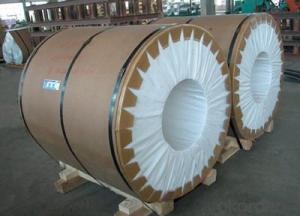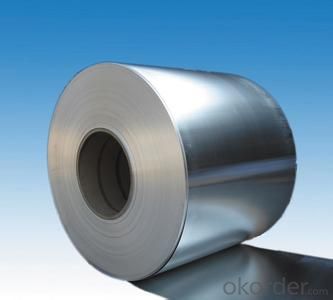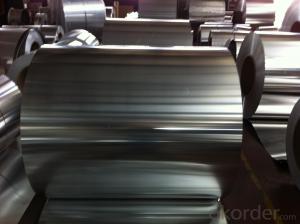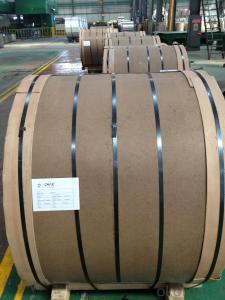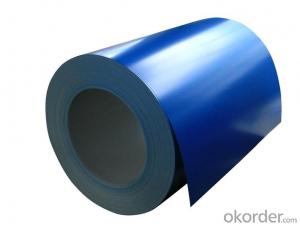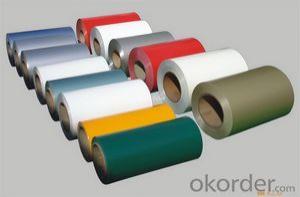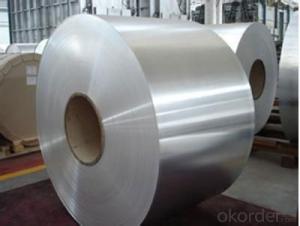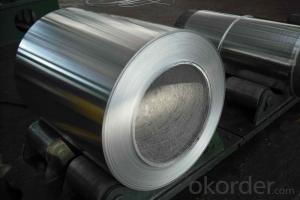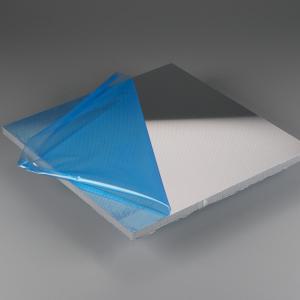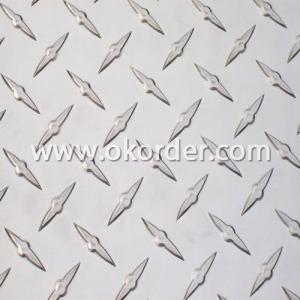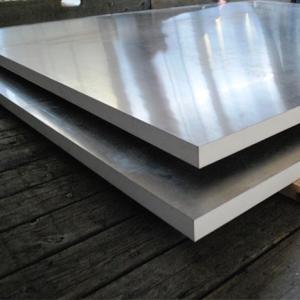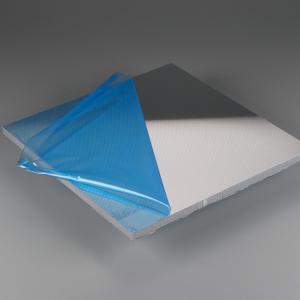Laserit Laserable Aluminum Sheets - Continuous Casting Aluminium Coils for Color Coating AA3003
- Loading Port:
- Shanghai
- Payment Terms:
- TT or LC
- Min Order Qty:
- 5 m.t.
- Supply Capability:
- 50000 m.t./month
OKorder Service Pledge
OKorder Financial Service
You Might Also Like
Specification
1.Structure of Continuous Casting Aluminium Coils for Color Coating AA3003
Continuous Casting Aluminium Coils for Color Coating AA3003 is one semi-finished aluminium material. The coils are widly used in the building,decoration and aluminium circle. The alloy AA5052 is the most common alloy in the aluminium industry. Its weight is much lower than steel. So many customers choosed aluminium material instead of steel.
2. Main features of Continuous Casting Aluminium Coils for Color Coating AA3003
a.Competitive price---We have our own mills and can produce mill finished aluminium coils, so we can control the production cost better.
b.Professional after-sale service---We have more than 15 years exportation experience and you need not worry about the exporation problems.
c.Fast delivery time---We can control the delivery time within 35 days.
3. Image of Continuous Casting Aluminium Coils for Color Coating AA3003
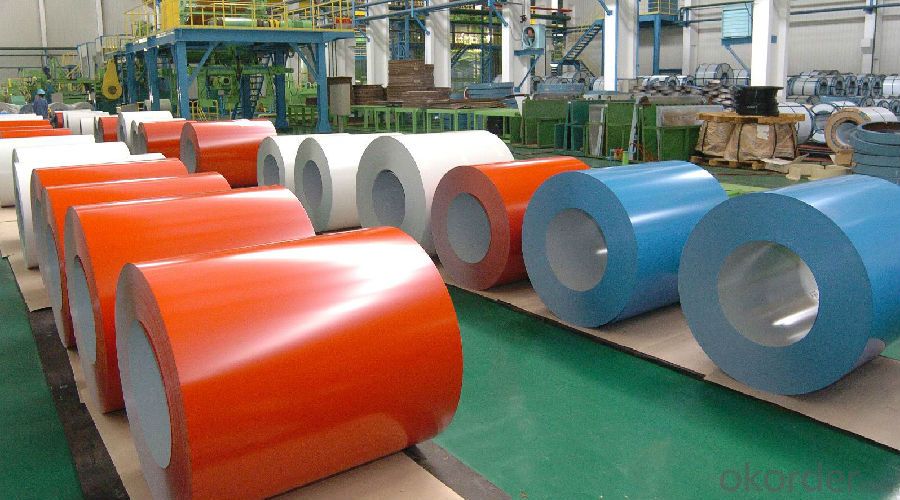
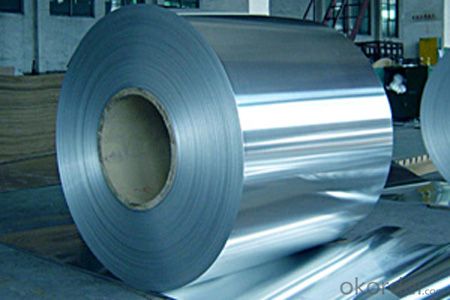
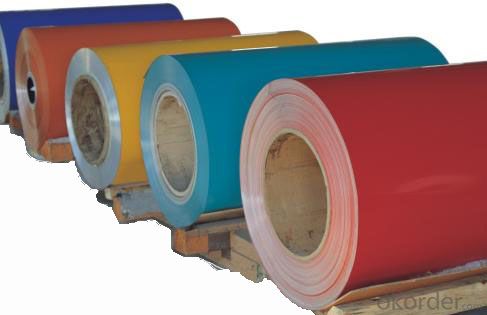
4. Product Specification
| Alloy | Temper | Thickness | Width | Weight |
| AA3003 | HO | 0.2MM-3MM | 1000-1500MM | Max 3 tons |
5.FAQ of Continuous Casting Aluminium Coils for Color Coating AA3003
What is the quality standard?
---Usually our standard is GB3880-2006
What is the largest width?
---It is 2300mm
What is the MOQ?
---Usually we can accept 80 tons.
- Q: 6061 what is the density of the aluminum plate?
- 6061 aluminum plate density:6061 aluminum plate is aluminum alloy, the density is calculated according to 2.9g/cm3.Calculation method:Aluminium plate weight (kg) =0.0000029 * * * * width * lengthAluminium tube weight (kg) =0.0000029 * wall thickness * (outside diameter wall thickness) * lengthFormula for weight calculation of aluminium bars (kg) =0.0000029 * radius * radius * length
- Q: What is the weight of a standard aluminum sheet?
- Depending on its dimensions and thickness, the weight of a standard aluminum sheet may vary. On average, aluminum sheets tend to weigh approximately 2.7 grams per cubic centimeter. If you wish to ascertain the weight of a particular aluminum sheet, you must possess knowledge of its dimensions (length, width, and thickness). By multiplying these dimensions, you can determine the sheet's volume. Subsequently, you can calculate the weight in grams by multiplying the volume by the density of aluminum (2.7 g/cm³).
- Q: Are the aluminum sheets suitable for manufacturing automotive body panels?
- Yes, aluminum sheets are suitable for manufacturing automotive body panels. Aluminum is a lightweight yet strong material that offers several advantages for automotive applications. Its high strength-to-weight ratio allows for improved fuel efficiency and better overall performance of the vehicle. Aluminum also has excellent corrosion resistance, making it suitable for withstanding harsh environmental conditions. Additionally, it can be easily formed and manipulated, allowing for complex designs and shapes required for automotive body panels. These characteristics make aluminum sheets a popular choice in the automotive industry for manufacturing body panels.
- Q: Could two pieces of aluminum sheets be welded together?
- youcan use aluminium soldering,what do you want to weld?
- Q: What is the tensile strength of 101 aluminum sheets?
- The tensile strength of 101 aluminum sheets varies depending on the thickness and manufacturing process, but it typically ranges from 20,000 to 30,000 pounds per square inch (PSI).
- Q: i want to build a smelter to recycle aluminum auto parts
- Tita, while providing an elegant answer, forgot to mention that it is mostly cut and paste from Wikipedia. I'll provide the link for her below. She also forgot to copy and paste the part about aluminum oxidizing easily when it is heated and melted. If you are trying to smelter aluminum, you will need to have a compressed or dense mass of aluminum and a smelter that is airtight. Otherwise, it will just oxidize right back into aluminum oxide, which is a white powder. You've probably seen this when you throw a beer can in the campfire? good luck and have fun in your endeavors. And always remember to cite your source!
- Q: How to clean the engine oil and kerosene on the surface of aluminum sheet?
- it will disappear after rubbing with petrol.
- Q: How do aluminum sheets perform in terms of formability?
- Aluminum sheets possess remarkable formability, renowned for their capability to be effortlessly molded and contoured into intricate configurations without encountering any cracks or fractures. The exceptional ductility and malleability of aluminum enable its transformation into diverse shapes, curves, and angles with relative simplicity. This inherent formability renders aluminum sheets highly adaptable for utilization in an array of applications, including automotive body panels, aircraft components, and architectural structures. Moreover, aluminum sheets exhibit commendable resistance to corrosion, further augmenting their performance in various environmental conditions. All in all, aluminum sheets amalgamate formability, strength, and durability, rendering them a favored choice across numerous industries.
- Q: Can aluminum sheets be used for boat building?
- Boat building can indeed incorporate aluminum sheets. The lightweight quality, durability, and resistance to corrosion make aluminum a favored material for constructing boats. Small recreational boats, larger yachts, and even commercial vessels commonly employ aluminum sheets in their construction. These sheets offer numerous benefits, including ease of manipulation, a remarkable strength-to-weight ratio, and minimal upkeep requirements. Furthermore, aluminum boats are esteemed for their exceptional buoyancy, stability, and fuel efficiency. All in all, utilizing aluminum sheets is a suitable and dependable choice for boat building.
- Q: Can aluminum sheets be hydroformed?
- Yes, aluminum sheets can be hydroformed.
Send your message to us
Laserit Laserable Aluminum Sheets - Continuous Casting Aluminium Coils for Color Coating AA3003
- Loading Port:
- Shanghai
- Payment Terms:
- TT or LC
- Min Order Qty:
- 5 m.t.
- Supply Capability:
- 50000 m.t./month
OKorder Service Pledge
OKorder Financial Service
Similar products
Hot products
Hot Searches
Related keywords
